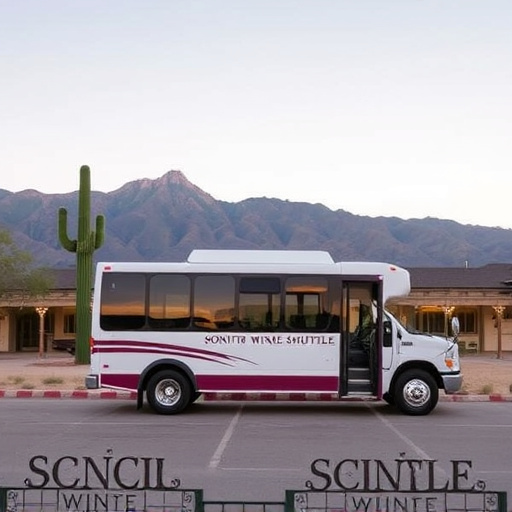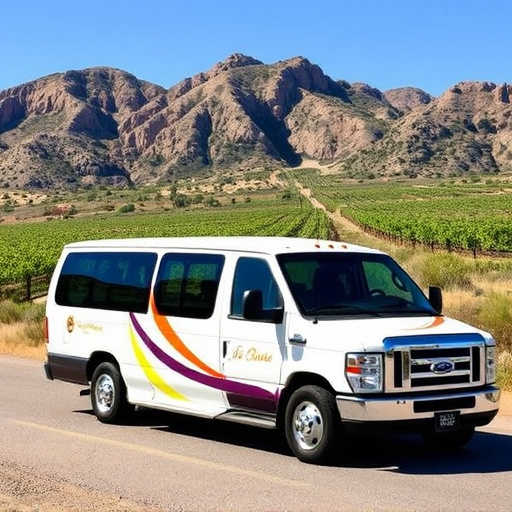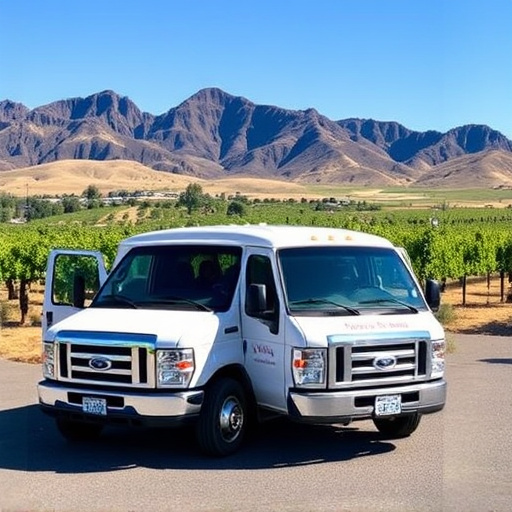The wine industry is becoming more inclusive, addressing the demand for accessible travel experiences, particularly for people with disabilities. Traditional wine tours need to adapt to cater to all visitors, as shown by Sonoita's specialized shuttle service. This service enables guests with mobility challenges to enjoy the scenic surroundings and sensory experiences of wine regions. Designing an accessible shuttle requires focus on safety, comfort, and inclusivity, including low-floor entrances, ample space, ramp access, trained drivers, and carefully planned routes. Implementing these changes offers numerous benefits, enhances accessibility, and promotes a reputation for forward-thinking businesses. The Sonoita Wine Tour Shuttle aims to provide an accessible experience for all, leveraging technology and community collaboration for tailored experiences.
“Experience the essence of Sonoita’s vineyards without barriers! This article explores the innovative concept of wheelchair-accessible shuttle transport, catering to a diverse range of wine enthusiasts. With an increasing demand for inclusive experiences in the industry, the Sonoita Wine Tour Shuttle sets a new standard. We delve into its design, benefits, and potential challenges, offering insights on creating an accessible paradise for all. Discover how this initiative ensures everyone can indulge in the magic of wine, exploring the picturesque landscapes and vibrant wineries.”
- The Growing Need for Accessible Transport in the Wine Industry
- Designing a Wheelchair-Friendly Shuttle Service
- Benefits and Challenges of Implementing Such Tours
- Creating an Inclusive Experience: Best Practices and Future Prospects for Sonoita Wine Tour Shuttle
The Growing Need for Accessible Transport in the Wine Industry
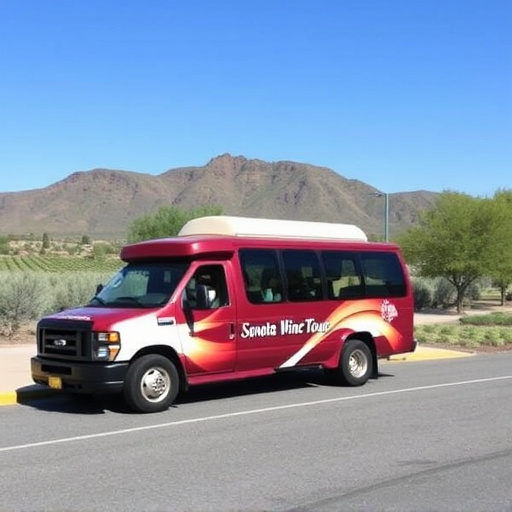
The wine industry, long known for its picturesque landscapes and vibrant communities, is undergoing a significant transformation to become more inclusive. As the demand for accessible travel experiences continues to rise, particularly among individuals with disabilities, the need for wheelchair-accessible transport has become increasingly vital. The traditional wine tour experience, often characterized by its bustling nature and diverse attractions, must evolve to cater to all visitors, ensuring no one is left behind.
A Sonoita wine tour shuttle service, for instance, offers a unique opportunity to bridge this gap. By providing specialized transportation options, wineries can welcome guests with mobility challenges, allowing them to fully immerse themselves in the beautiful surroundings and enjoy the rich sensory experience that wine regions offer. This shift towards inclusivity not only expands the appeal of wine tours but also contributes to a more diverse and welcoming industry.
Designing a Wheelchair-Friendly Shuttle Service
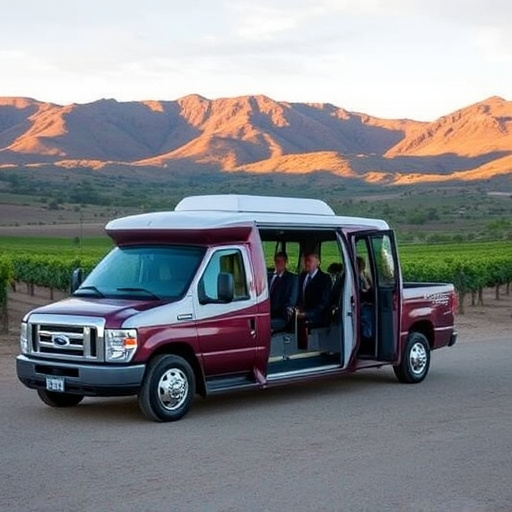
When designing a wheelchair-accessible shuttle service for Sonoita wine tours, it’s crucial to prioritize safety and comfort. This involves selecting vehicles equipped with features like low-floor entrances, sufficient space for wheelchairs and accompanying companions, and ramp access. Additionally, ensuring the driver is trained in assisting passengers with disabilities is paramount. The shuttle should be designed to accommodate various mobility needs, from manual chairs to power chairs, while providing a smooth and stress-free journey.
The routing and scheduling of the Sonoita wine tour shuttle also play a vital role. Careful consideration must go into selecting routes that offer easy access to wineries, with minimal curb cuts or steps along the way. A well-planned schedule allows ample time for each passenger, especially those using mobility aids, to enjoy the experience without feeling rushed. This attention to detail ensures an inclusive environment, fostering a sense of belonging for all participants on the wine tour.
Benefits and Challenges of Implementing Such Tours
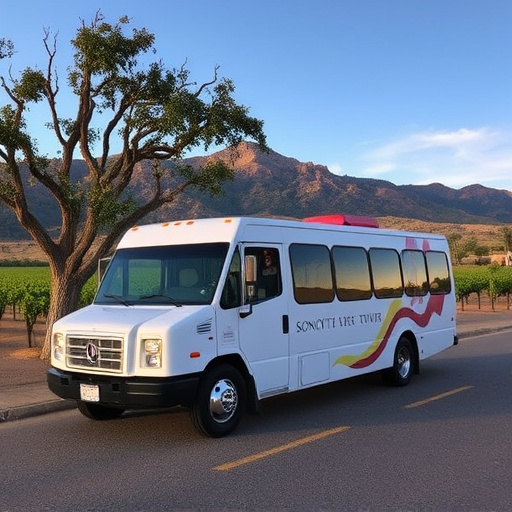
Implementing wheelchair-accessible shuttle transport for inclusive wine tour experiences offers a multitude of benefits, enhancing accessibility and creating opportunities for all to enjoy the vibrant Sonoita wine scene. These tours cater to individuals with diverse mobility needs, ensuring everyone can participate in exploring local vineyards, tasting exquisite wines, and immersing themselves in the unique atmosphere. By providing this service, wineries and tour operators not only comply with accessibility standards but also actively foster inclusivity, boosting their reputation as forward-thinking and community-focused businesses.
However, challenges exist when introducing such tours. Adapting existing shuttle services to accommodate wheelchairs requires careful planning and modifications, including ensuring adequate space, ramp access, and secure fastening mechanisms for wheelchairs. Moreover, scheduling and routing may need adjustments to guarantee sufficient time between stops and accommodate the needs of all participants. Financial considerations are also paramount, as investing in accessible transport can be a significant expense. Nonetheless, with thoughtful implementation and community support, these challenges can be overcome, resulting in enriching experiences that truly celebrate diversity and embrace everyone’s right to enjoy the beautiful world of wine.
Creating an Inclusive Experience: Best Practices and Future Prospects for Sonoita Wine Tour Shuttle
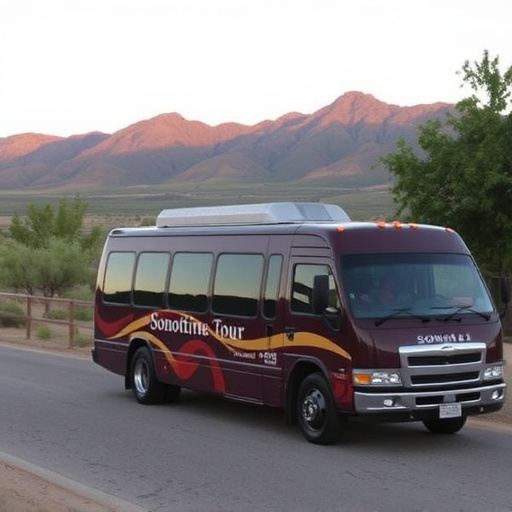
Creating an inclusive experience is paramount for the Sonoita Wine Tour Shuttle, ensuring all visitors, including those with mobility challenges, can fully enjoy the region’s renowned vineyards and scenic beauty. Best practices involve equipping the shuttle with wheelchair accessibility features, such as a low-floor entrance and secure mounting mechanisms for wheelchairs. Training staff to assist passengers with disabilities and providing clear, accessible communication channels are also vital.
Looking ahead, the future prospects for Sonoita Wine Tour Shuttle’s inclusivity hinge on technological advancements and community collaboration. Implementing innovative solutions like GPS tracking for real-time passenger updates and integrating digital reservation systems can enhance accessibility further. By fostering partnerships with local wineries and tourism boards, the shuttle can offer tailored experiences, ensuring every visitor feels welcomed and included in this vibrant wine tour ecosystem.
The introduction of wheelchair-accessible shuttles in the wine industry, such as the innovative Sonoita Wine Tour Shuttle, represents a significant step towards creating truly inclusive experiences. By addressing the critical need for accessible transport, these shuttles not only enhance accessibility but also enrich the overall visitor journey. The success of this initiative lies in its ability to merge functionality with comfort and design, ensuring wine enthusiasts with disabilities can fully participate in and enjoy the vibrant, bustling wine tourism landscape. As the industry continues to embrace inclusive practices, the future looks promising for similar shuttle services, opening up new possibilities and prospects for everyone, regardless of mobility.

